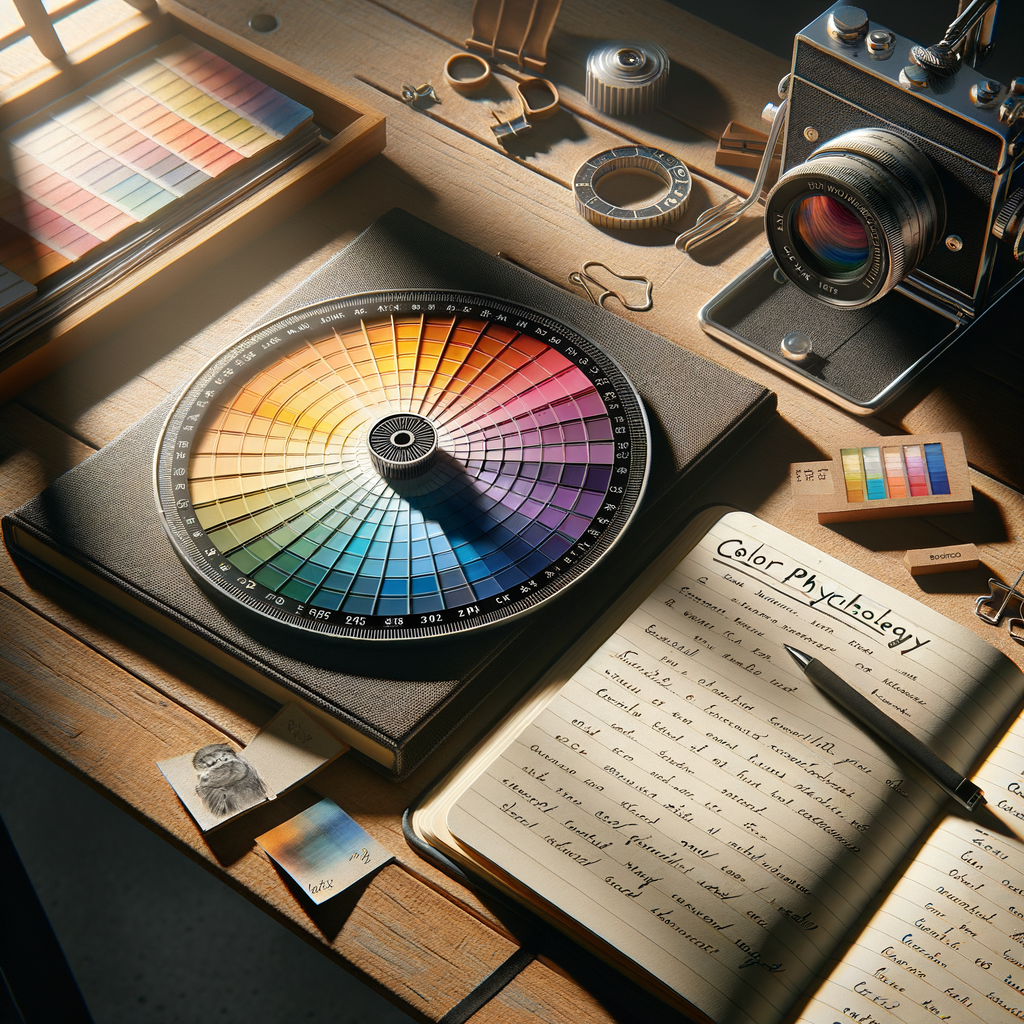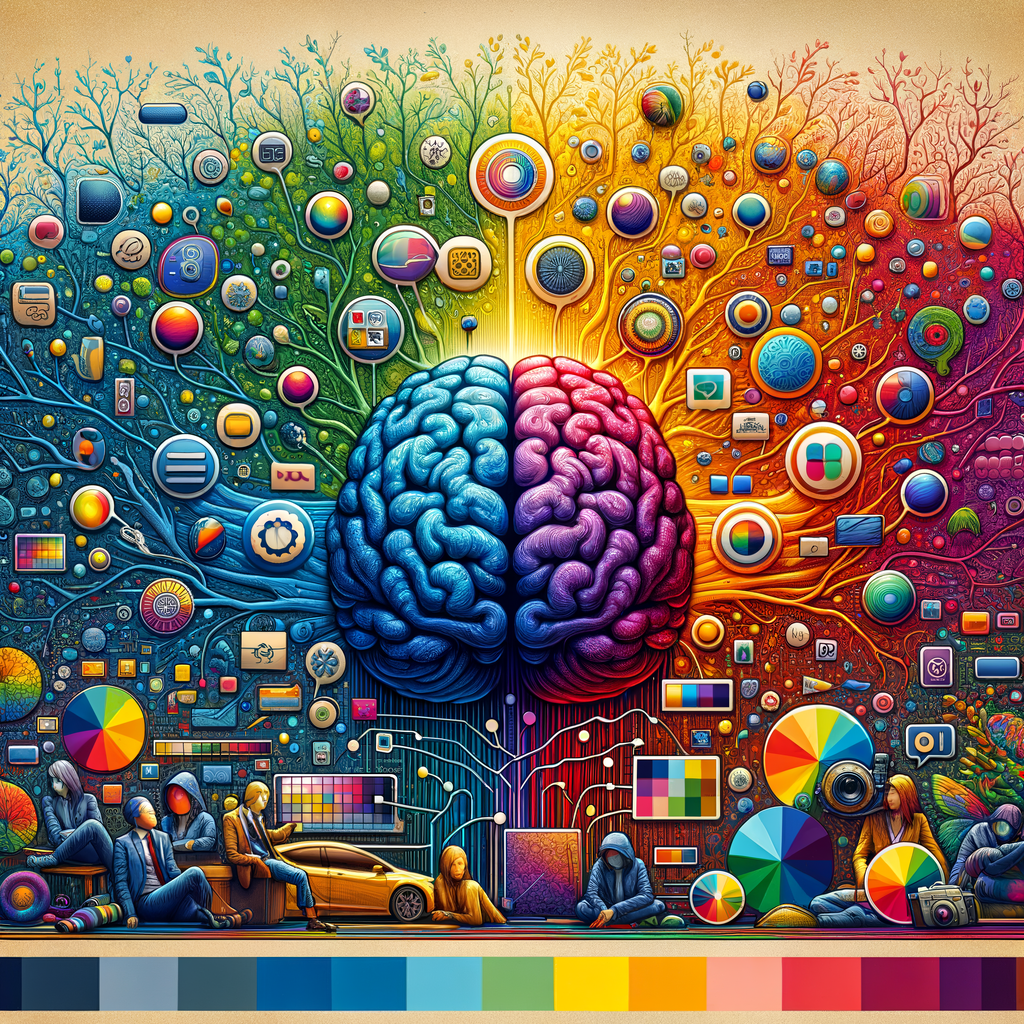The Hidden Psychology Behind Logo Colors That Drive Customer Loyalty
Uncover how logo color psychology influences consumer emotions and strengthens brand loyalty, turning logos into powerful tools for business growth.
The Hidden Psychology Behind Logo Colors That Drive Customer Loyalty
As a creator and marketer, I've come to realize that the colors we choose for our brand logos are far more than mere aesthetic decisions. They tap into the complex landscape of human psychology, subtly shaping perceptions and emotional connections that ultimately influence whether customers return to our products or services time and time again. Understanding the science behind logo colors can elevate a brand from forgettable to unforgettable, forging deep bonds that encourage customer loyalty. In this blog post, I'll explore the fascinating world of color psychology and share insights on how strategic color choices can transform your logo into a marketing powerhouse.
Why Color Matters in Branding
Color is often the first thing people notice about a logo. Think of iconic brands like Coca-Cola, Tiffany & Co., or Instagram—their logos are inseparable from their signature colors. But why is this? It turns out that our brains process color before words or shapes, making the emotional impact of a logo color immediate and lasting. Colors act as visual shortcuts, instantly communicating values and feelings about a brand. For example, red tends to evoke excitement and passion, which is why so many fast-food chains incorporate it to stimulate appetite and urgency. On the other hand, blue signals trustworthiness and calm, making it ideal for corporate and healthcare brands. By aligning your brand values with appropriate color choices, you can foster an emotional resonance that draws customers in and keeps them coming back.
The Emotional Impact of Popular Logo Colors
Color psychology delves into how certain shades affect human behavior and decision-making. When it comes to logo design, each color can drive specific consumer emotions. For instance, green is linked with health, nature, and tranquility, often appealing to eco-friendly or wellness-oriented businesses. Yellow radiates happiness and optimism, perfect for brands wanting to seem approachable and youthful. Even neutrals like black and white signal sophistication or simplicity, impacting brand perception at a subconscious level. Crafting a logo is about more than standing out; it's about whispering the right message to your target audience every time they see your visual identity.
Consistency in Logo Colors Builds Recognition and Trust
The key to nurturing real customer loyalty is consistency. When I advise creators and entrepreneurs on branding, I stress the importance of sticking to a specific palette across all platforms. If your logo is a particular shade of teal, that same hue should appear on your website, product packaging, social media, and advertisements. Customers become familiar and comfortable with your colors, instinctively associating them with your business. This sense of reliability is crucial: repeated exposure to the same colors builds recognition and trust, which are the bedrocks of long-term loyalty. In a crowded marketplace, your consistent use of color becomes your brand’s silent ambassador.

Creating Emotional Connections Through Strategic Color Choices
What I find most fascinating is how color choices in logos not only communicate brand personality but also shape customer experiences over time. If a fitness brand uses powerful shades of orange and black, it evokes energy and determination, encouraging members to stay motivated. Likewise, a financial consulting firm that utilizes navy blue and silver expresses professionalism, wisdom, and stability, soothing worries over critical monetary decisions. By deliberately choosing colors that reflect both the functional and emotional benefits of your product, you can create a strong, sensory connection that keeps your audience engaged and loyal. This bond is strengthened each time a customer interacts with your branding across different touchpoints, guiding their perception and emotional journey with your business.

Avoiding Common Pitfalls: How to Choose the Right Logo Colors for Your Brand
However, the psychology of color isn’t universal—culture, age, gender, and context all influence how a color is perceived. What might read as luxurious in one region can feel somber in another, and colors that appeal to younger demographics might alienate older consumers. When deciding on your color palette, research your ideal buyer personas and study your industry peers, but also make sure to differentiate. Avoid the temptation to blindly follow trends; instead, focus on colors that reinforce your brand promise and core values. Testing color variations with focus groups or A/B marketing can reveal unanticipated insights into what resonates with your customer base. Thoughtful color choices let you stand apart, positioning your logo in customers’ minds as a symbol of consistency and authenticity.
From Logo Color to Lasting Loyalty: Transforming Your Brand
Ultimately, a logo’s color isn’t just about visual appeal; it’s a strategic element with the power to spark instant emotional reactions and guide long-term purchasing behaviors. By mastering the psychology behind color choices, I’ve seen brands not only grab attention but also establish lasting bonds with their customers. Whether you’re revamping your logo or creating one from scratch, investing time in understanding how color affects the psyche gives your business a distinct edge. Aligning your visual identity with your audience’s values and emotions can turn a simple logo into a deeply resonant emblem of trust, encouraging customers to remain loyal for years to come.
Conclusion
The logo colors you select are silent communicators, wielding the ability to influence consumer perception, evoke loyalty, and differentiate your business in a saturated market. With a thoughtful and strategic approach to color psychology, your logo becomes much more than a design; it transforms into a vital asset that drives genuine customer loyalty and long-term growth.
Blog Article Tags
logo design branding color psychology marketing customer loyalty visual identity brand strategy small business digital marketing graphic designMore Articles
Maximizing Your Reach: Effective Social Media Strategies for Indie Creators - Discover actionable social media strategies for indie creators to engage fans, grow your audience, and increase support across disciplines.
Hidden Gems: Unconventional Affiliate Marketing Freelancer Jobs That Pay Big - Discover little-known, high-paying affiliate marketing freelance gigs that can expand your income streams and boost your freelancing portfolio beyond the typical roles.
The Psychology Behind Color Choices in Banner Ads That Convert - Discover how harnessing color psychology in banner ads can significantly boost engagement and conversions for creators and small businesses.
Turning Front-End Skills Into a Niche SaaS: Attract High-Paying Clients - Learn how front-end developers can create successful niche SaaS products, attract premium clients, and boost freelance income with practical strategies and tips.
How To Transform Viral Music Challenges Into Profitable Artist Promotion - Learn how to leverage social media music challenges to grow your audience and income as a new artist. Harness viral trends as part of your marketing strategy.


